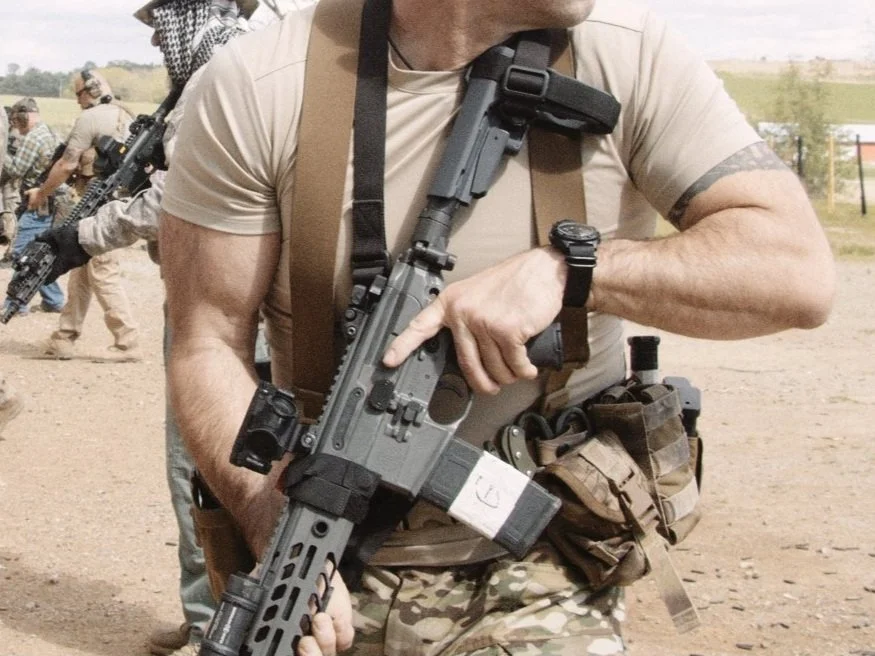Proper Selector Use
Recently, a firearms instructor from another agency contacted me. His students were asking the “why” behind the modern method of employing the M4 selector and he wanted some easily digestible bullet points to give them. I decided to turn the points from that conversation into an article.
First, I want to lay out the proper use of the M4 selector/safety. I, and many others, teach the following: the weapon should always be on safe, unless 1) the conditions for deadly force are met, 2) you have a sight picture, and 3) you are actively firing your weapon. This means weapon on safe if you are 1) moving 2) conducting a reload 3) conducting a transition or 4) changing levels (going from standing to kneeling).
So, what are the advantages of placing the selector on “safe” during a reload / transition?
1) It reduces the number of choices your brain has under stress. We’ve all seen someone on the firing line not put their weapon back on safe when they conduct a reload, or fire a string, and then “let it hang” because the drill is over – all with the weapon on fire. Similarly, I’ve seen students put their weapon on safe during a reload and then forget to take the weapon off safe to fire the next relay. Why? Because these students have been given too many choices on when to have their selector on “safe” - “Well the gun can be off safe here, but you should probably put it back on safe before you move again, it’s up to you but try to remember…”. No. This can lead to confusion under even the slightest pressure in training, to say nothing of a real-world incident, all with the possibility of tragic outcomes. Instead, teaching that the weapon is always on safe unless you meet the three conditions outlined above gives your brain black & white conditions to meet. “If I’m not shooting, I should put the selector on safe” is far easier to train to a subconscious level of competence. There is an excellent video of an LAPD SWAT officer-involved shooting. A suspect shoots an officer on perimeter and as he attempts to leave cover to close with the downed officer, a SWAT officer engages him from an overwatch position with his M4. On bodycam you can clearly see the officer come off safe, fire a sequence of rounds until the suspect is down, and then immediately puts the selector back on safe while he continues to cover the suspect. The automaticity of the action shows the high level of performance trained by that organization.
2) Basic safety. The real world is a chaotic place. Conditions can change in an instant. Any number of events can occur that cause what works on the flat range to fall short. People trip, fall, get pushed, gear gets snagged, etc. If you have attended an LTAC class, you have probably heard me mention the tragic statistic for law enforcement – that 76% of police struck by gunfire were shot by either themselves or by a fellow officer. Now while this includes training accidents, mistaken identity engagements, etc., the statistic serves to reinforce the point that high levels of gun safety must be adhered to at a subconscious level of competence.
3) Supports good use of force decision-making. Threats can become nonthreats (or at least no-shoots) in the blink of an eye. If you are engaging a shoot threat and your weapon runs dry, putting the weapon back on safe while you conduct a reload gives you one more speed bump prior to re-engaging with deadly force. What if he dropped his weapon? What if an innocent person moved between you? As we’ve said before, very few people get physically harmed because their split times were too slow, but there are plenty of cases of an innocent person, or a no-shoot threat being shot because someone was too fast on the trigger.
4) The selector is a diagnostic tool. If your M4 stops working, and you attempt to move the selector from semi to safe, and it will not move…that is a clue. The inability to put the weapon back on safe tells you that you are experiencing a stoppage where the hammer has fallen and not been reset. You can then make the choice to clear the stoppage, or transition to your secondary weapon. The selector is now providing you with information that can guide efficient decision-making, which is where speed is gained.
I did not come up with this practice – I have heard it being preached by many different people, in many different organizations. I’m going to steal a line from Pat MacNamara “the selector is always an enabler, and never a disabler.” It was once commonplace to say things like “boots hit the deck, weapons hot!” We have moved away from such unsafe practices due to lessons learned – and in many cases those lessons were learned due to negligent discharges which cost people their lives.
If you find that the proper use of the selector slows you down in an appreciable manner, then I would recommend that you continue to practice its proper use until it is burned into your subconscious. Remember – you don’t need to expend a single round of live ammo to practice this skill. Dry fire is free. See you on the range.
—Flynn

